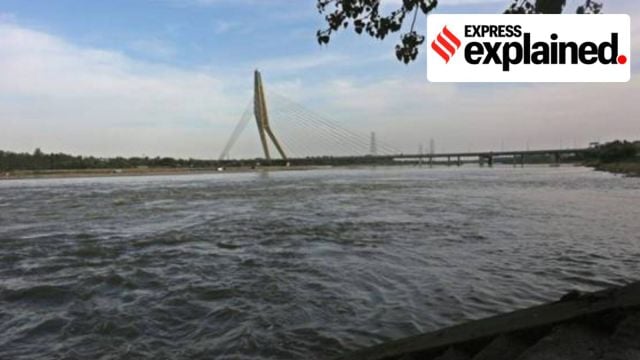© The Indian Express Pvt Ltd
Latest Comment
Post Comment
Read Comments
 Easily dissolvable in water, ammonia is a colourless, gaseous pollutant with a sharp odour, which is widely used as an industrial chemical (Express Photo)
Easily dissolvable in water, ammonia is a colourless, gaseous pollutant with a sharp odour, which is widely used as an industrial chemical (Express Photo)Yamuna Water Row Explained: Days after Aam Aadmi Party (AAP) national convener Arvind Kejriwal accused the BJP-led Haryana government of deliberately “poisoning” Delhi’s water supply, the latter lodged a complaint against the former Chief Minister on Wednesday (January 29).
On Tuesday, Delhi Chief Minister Atishi and her Punjab counterpart, Bhagwant Mann, met Election Commission (EC) officials and alleged that the Haryana government was deliberately releasing alarming levels of ammonia into the Yamuna, endangering Delhi’s water supply.
Easily dissolvable in water, ammonia is a colourless, gaseous chemical with a sharp odour, which is widely used in industrial processes. It is also used as fertiliser, coolant, cleansing agents, food additives, and in animal feed production, plastic and paper manufacturing, according to the World Health Organisation (WHO).
Major sources of ammonia pollution include runoff from farmlands, a direct discharge of effluents from industries where ammonia is used and untreated sewage. The chemical is also naturally released in water with the degradation of organic matter such as blue-green algae.
The long-term impact of ammonia in human bodies can cause damage to internal organs due to its corrosive properties, according to the US Department of Health and Human Services.
Notably, dye units, distilleries and other factories concentrated in the Panipat and Sonipat districts as well as sewage from colonies are believed to pollute the stretch of the Yamuna before it enters Delhi at Wazirabad. As a result, several quality parameters of the river are impacted including dissolved oxygen which becomes zero. The situation worsens in the dry, winter months due to the absence of freshwater downstream.
Moreover, water treatment plants cannot treat water with ammonia content of more than one part per million (ppm). As a result, water supply disruptions take place in the capital when the ammonia levels spike in the river.
The Delhi Jal Board’s water treatment plants use chlorine to treat excessive ammonia. According to officials, 11.5 kg of chlorine is needed per litre of water per hour to neutralise one ppm of ammonical nitrogen.
Some amount of chlorine should remain in the treated water after the treatment process so that pathogens can be neutralised.
In winters, as the ammonia levels increase the efficiency of the water treatment plants reduces, according to the Delhi Jal Board.
What have governments done to tackle the issue?
For years now, the Delhi and Haryana governments have failed to come up with a long-term viable solution to resolve the issue of excessive ammonia in water. Delhi government proposed setting up an in-situ ammonia treatment plant at the Wazirabad pond as an immediate solution to the crisis in March 2023. However, it remains under development. The Haryana government is also yet to complete laying down a pipeline to prevent the inter-mixing of pollutants.